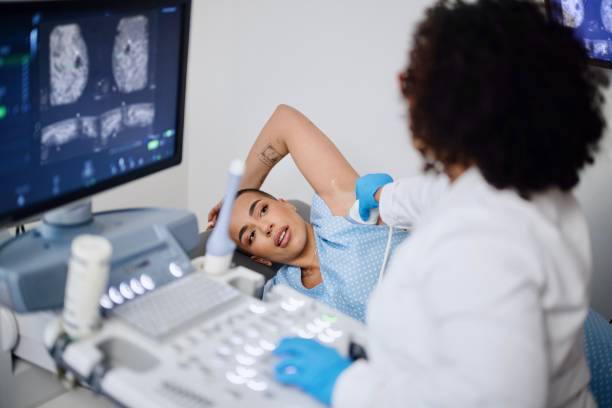

Medical News Today, Audrius Brazdeikis, right-hand educator of material science at the College of Natural Sciences and Mathematics, University of Houston, and Quentin Pankhurst, teacher of physical science at University College London (UCL) They have built up another screening strategy consolidating nanotechnology and progressed attractive detecting in light of high-temperature superconductors.
Their advancement will empower specialists to all the more successfully find the sentinel lymph hub of the first metastatic tumor cells in a channel.
Specialists have made an ultrasensitive attractive test to recognize modest attractive fields in the body as a magnetometer (an instrument used to track the vicinity of attractive nanoparticles clinically presented. Amid the operation of bosom disease, the specialist infused into the tumor or tissues encompassing a tinge of attractive nanoparticles as differentiation operators endorsed by the FDA.
A specialist holds the test consolidating two arrangements of curls associated with a sensor. An arrangement of loops charges the particles and alternate recognizes the attractive reaction of said particles. The sensor, known as HTS SQUID (superconducting gadget or quantum obstruction at high temperature), is set in a cryogenic vessel and submerged in fluid nitrogen, which cools it to 77 K, the proportionate – 320,5o F. framework utilizes electronic gadgets with unique particulars and tablet with a project that gives the specialist visual and sound input while following of nanoparticles in it inside the body.
After getting a grant from the Ministry of Commerce and Industry of the United Kingdom of $ 250,000 to look into from 2004 to 2006 inside the system of the shared activity bioscience known as the UK-Texas Bioscience Collaboration Initiative, Brazdeikis, and Pankhurst needed to fabricate a gadget and demonstrate that it worked.
From that point, a morals panel in the UK has affirmed the utilization of such a screening strategy in a clinical trial of ladies who experience surgery for bosom growth at University College Hospital, London.
Dr. Michael Douek, gaining practical experience as a surgery bosom specialist, and teacher at UCL, is regulating the trial. Agreeing with Douek, who as of late went by Houston to get ready for the trial, the morals council has approved the utilization of the test in 10 operations, an assumption that could increment to 100 after exploring the aftereffects of the initial 10. Analysts additionally would like to start clinical trials in Japan and Europe before the end of 2007.
Current practice requires the patient with bosom disease to get two infusions, one of a radioactive isotope and one over a blue tint, amid the preoperative (8 to 12 hours before the operation), hospitalization being essential more often than not the night before the operation. Later, in the working room, the specialist utilizes a handheld gamma test to situate by watching the color, of the lymph hub with the most elevated amount of radioactivity.
The innovation, be that as it may, permits the specialist to regulate one infusion, the attractive color, all that’s needed is 10-15 minutes to produce results; and wipes out the need for atomic drug proficiency to infuse the radioactive material. Along these lines, hospitalization is not required while holding up and superfluous introduction of patient and specialist to radioactivity is evaded.








